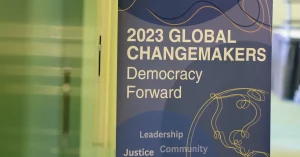A democracy requires an informed citizenry and transparency of information in order to contain corruption and hold Governments and their instrumentalities accountable. Every citizen of a democracy has the right to inquire and have access to the workings of the Government. In light of this, the Ananta Centre held a digital session on “RTI Act, 2005: A Tool For Effective Governance”with Mr YK Sinha, Chief Information Commissioner of India, and Mr Govindraj Ethiraj, Founder, Boom and IndiaSpend; Ananta Kamalnayan Bajaj Fellow in the chair.
The Right to Information Act has altered the data and information landscape in India. As we’ve seen more information entering the public domain, it has created an interesting situation where with a surge in information, citizens have actually demanded supplementary information as well. This Act keeps pressure on the government and public authority not only to perform but to be more responsive to the needs of the public.
To try and push the public authority into the direction of giving out information the commission has instituted a transparency audit. The commission gets each public authority to do a transparency audit by government run training institutes every year. There are objective questions on which each authority is marked and is subsequently given a final score. It’s a cog in the wheel for the RTI Act because it helps in improving the performance of the public authority every year. The greater the transparency, greater the accountability as well.
About 70-80 percent of the cases that come before the RTI commission are from genuine information seekers who have a problem and hence they need to be complied with. The public authority must give them their due or give them information as to why there’s a problem. Most cases are essentially grievances. Hence even though the RTI act is not a grievance redressal mechanism, it often turns out to be one. The Public information officers play an important role in ensuring that the RTI application goes to the right wing and section or right Public information officer to get a response in time.
To assure there isn’t too much of a break due to the pandemic they have been conducting audio and video conferencing. Through these initiatives they have been able to maintain the rate of disposal. In most cases appellants are happy to get their cases addressed even if it’s through audio conferencing. With the access of social media etc, people don’t even need some tools of the RTI to be well informed. So, even when they do reach out to the public authority they have very specific information to ask hence making the job of the public authority and the commission easier.
The RTI act has been able to help the common man by just providing information. Citizens have been able to go in for arbitration because of the information available through the RTI mechanism. There are a large number of people who use this to keep the public on their toes and make them more accountable. This session explores how easier access to information has made the citizen far better informed.
Watch the entire session on Youtube!

























